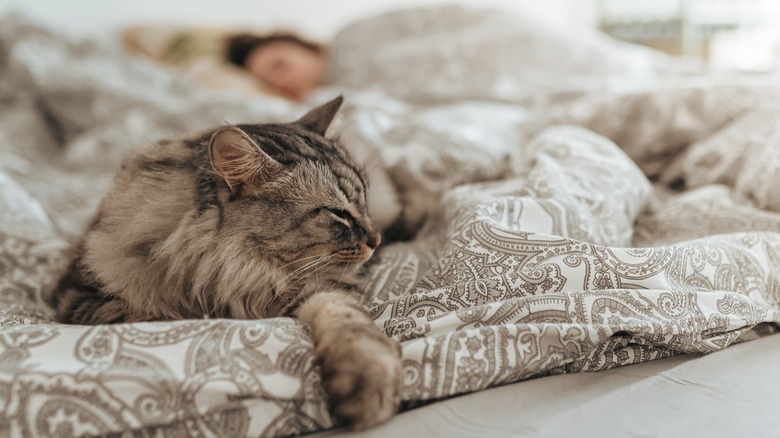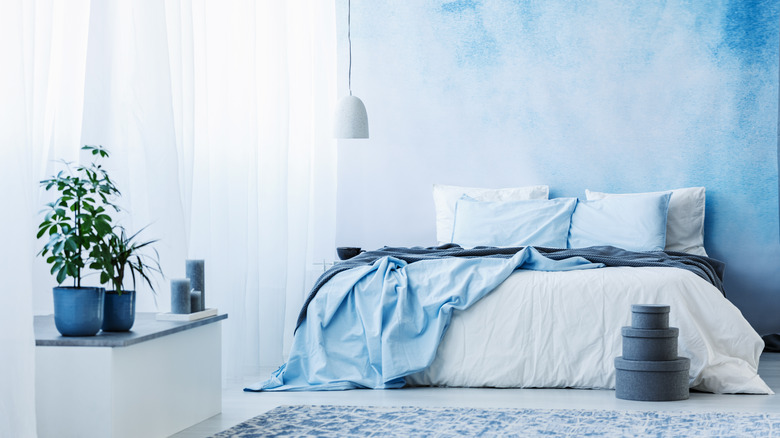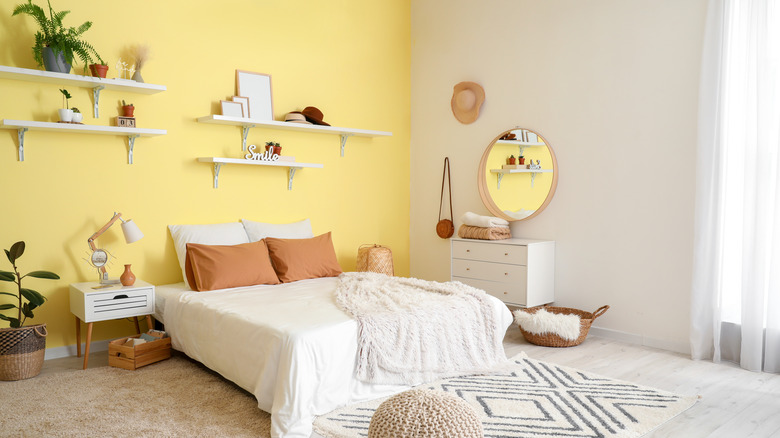The Best Bedroom Color For A Restful Vibe
Sleep, sweet sleep! For some, it's a luxury — elusive and coveted. And for others, it's an escape — stealthy and intoxicating. But, according to the American Sleep Association, getting an adequate amount of good, restful sleep is necessary for daily health and functioning. In fact, humans slumber away (or actively try to sleep) for about a third of their entire lifetime, with millions experiencing insomnia.
However, there are simple things we can do to improve the odds of better sleep. Everything from general well-being to daily activities and habits plays a role in the number of nights of rest we get. In addition, our surroundings and environment make a big difference in how we feel and our state of mind, especially when it's time to relax and go to bed.
Color has a powerful effect on human psychology. It can evoke strong feelings and influence mood. It sets the tone of a room or event, and when used appropriately, it can enhance experiences — even those occurring in everyday life, like sleeping. Here's the best color to paint your bedroom in for a good night's rest.
Bring on the calm
Psychology Today says the color blue instills feelings of tradition, comfort, and peace. In other words, blue feels safe. Worldwide, it's the most popular color, especially among men, and is often used in advertising for its solid universal appeal. But, prized for its ability to create a serene vibe, blue can also be overly moody and dismal; hence, the phrase "feeling blue." But when used in a bedroom setting, its effect on sleep is impressive, And any shade of blue will do, according to Our Sleep Guide, although softer hues are preferred.
Who knew the color blue had superpowers? The London Image Institute claims blue can help with relaxation, reduces blood pressure, and impacts hunger and metabolism. Want to sleep longer? According to Sleep Academy, people who sleep longest do so in blue rooms. Want to wake up happier? Our Sleep Guide says to choose blue for your bedroom.
But if you don't like blue, you're not out of luck. You can still create a restful vibe with other colors.
Non-blue hues for good sleep
Pale, lemony yellow or earthy sage green are top contenders for shades that induce good sleep, Sleep Academy notes. To that end, choosing a cozy and less vibrant shade of yellow will be soothing and can feel uplifting and joyous. However, be careful — bright yellow tints can increase anxiety, which will not improve sleeping conditions. On the other hand, warm, soft yellows are optimistic, confident, and great as wall colors or added to the bedroom as accents. The Design Sheppard recommends choosing the pale shade that resonates with you.
Greens also help us to feel grounded. In color psychology, green is associated with regeneration and renewal, which are also the benefits of healthful sleep. In addition, according to The Design Sheppard, deeper emerald jewel tones can make a room feel luxurious. Whether on the walls or added as a complementary color, being surrounded by green can positively impact health and well-being.


